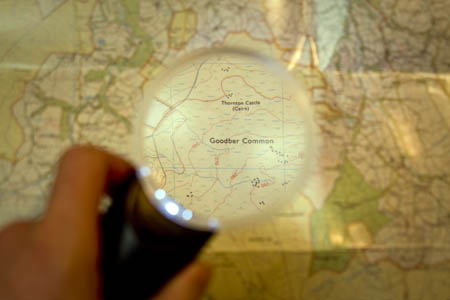
The Open Spaces Society guide will help the public find common ground
A campaign group has produced a guide to finding common ground when protecting the nation’s green spaces.
The guide, compiled by the Open Spaces Society, details the historical background of England’s commons, how to conserve them and involve local communities in their future.
Finding Common Ground was written by the OSS’s general secretary Kate Ashbrook and case officer Nicola Hodgson. The 78-page document was commissioned by Natural England, the Government’s advisory body on the outdoors.
Graham Bathe, Natural England’s common land major project manager, said: “Common lands provide some of our finest assets. They occur in all parts of England, even within the hearts of towns.
“No one is ever far from a common. Nearly 90 per cent of commons have designations to protect their wildlife, archaeology or landscape. However, they can be equally valued at a purely local level, where they are treasured for quiet enjoyment, dog walking, or simply as a place to escape and to enjoy scenery.
“We need to ensure that the interests of local communities are always at the heart of decision making, when considering the future of commons. That is why I am so pleased to see this report by the Open Spaces Society, which will help enormously in ensuring that commons can continue to be enjoyed at all levels.”
Common land goes back before medieval times and is land over which others have rights associated with their properties, for example, to graze animals, collect wood or dig peat.
These rights were traditionally vital to people’s existence, but many have now fallen into disuse. All commons have an owner and there is a public right to walk over all of them and on some a right to ride horses. There are 4,000 sq km (1,544 sq miles) of commons in England, in 7,062 separate units, embracing all types of landscape and habitat from the moors of Dartmoor to the Norfolk coast. 88 per cent of all common land is nationally or internationally designated, for its landscape, habitat or archaeology.
Kate Ashbrook said: “Commons are unique. People value them for all sorts of reasons. There is no other type of land in which so much public interest is concentrated.
“A staggering number and many thousands of hectares of commons are designated as national or international sites, for their wildlife, landscape or archaeological interest, and nearly all of them are available for public access by right.
“These designations bring with them targets and guidance on how to achieve them but, until now, there has been no guidance on how to evaluate and respect the community’s interests in commons. It’s all too easy to ignore those interests in the scramble for funding.
“Plans for grazing, scrub-clearance and tree-felling can all meet opposition unless the community is involved in their making. Fencing is often controversial: it may be desirable to enable the common to be grazed, but it’s a physical and psychological barrier and can change the nature of the common. If these ideas are introduced without involving the community the common will be a battleground, when it should be a place for peaceful enjoyment, where all interests co-exist harmoniously.
“Our guide shows how to identify the people who care about a particular common and how to involve them in the plans for its future. You cannot rush this work; you must take time to understand why the community values its common and how to accommodate everybody’s wishes.”
Finding Common Ground is available to download free on the Open Spaces Society website.